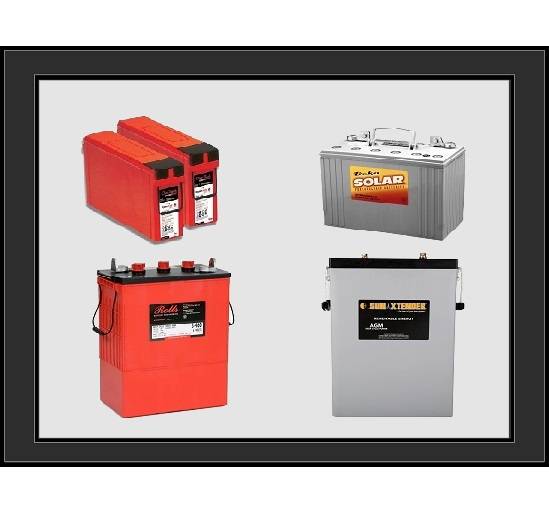Gel vs AGM Batteries – Which to Choose?
This guide outlines key factors to consider when choosing between Gel and AGM VRLA batteries. While each type has advantages, the manufacturer’s quality and the specific battery matter more than the Gel vs. AGM distinction for most solar applications.
Battery Types
Valve Regulated Lead-Acid (VRLA) batteries come in two types: Gel (starved electrolyte) and Absorbed Glass Mat (AGM, absorbed electrolyte). The best option depends on the manufacturer, battery specifications, and application. These generalizations vary by manufacturer. For example, Deka claims its Gel battery is better for deep discharge, while Concorde states its AGM battery excels in this area.
Cycle Life
Battery cycle life depends on the manufacturer and model. For example, a Deka 8G Gel battery lasts about 1000 cycles to 50% Depth of Discharge (DOD), while their 8A AGM battery lasts only 500 cycles to 50% DOD. The Concorde Sun Xtender AGM battery lasts 1000 cycles to 50% DOD. Universal Power Group (UPG) Gel and AGM batteries are rated for 500 cycles to 50% DOD. In Uninterruptible Power Supply (UPS) applications, this difference is negligible because the battery usually stays fully charged and cycles only a few times a year. However, in solar power systems, where batteries cycle to some depth of discharge daily, a higher cycle life rating is beneficial.
Temperature
Most manufacturers agree that AGM batteries perform better in colder climates (below 32°F [0°C]). Many AGM batteries deliver a higher percentage of rated capacity at lower temperatures. Gel batteries also perform well and can operate as low as -76°F (-60°C). Properly size the battery to deliver the required energy at low temperatures and ensure the electrolyte doesn’t freeze.
Discharge Rates
AGM batteries typically allow higher discharge rates than Gel batteries. AGM manufacturers often provide Cold Cranking Amps (CCA) ratings, which are used for starting high-current motors. However, CCA ratings aren’t relevant for most solar or UPS applications. While some solar systems may handle motor or surge loads, these loads usually don’t affect the choice of battery technology.
VLRA Batteries are not sealed
Many people call VRLA batteries sealed, but they are valve-regulated. They have a pressure relief valve that opens when internal pressure gets too high due to overcharging. Some smaller AGM and Gel batteries (typically under 36AH) are truly sealed and don’t have a valve. Both types are similar in this respect, so this feature doesn’t affect the technology choice. When the valve opens and releases gas, the gas is lost and can’t be used in the recombination process during recharging, which reduces the battery’s capacity. Therefore, minimizing overcharging and gassing is crucial for VRLA batteries.
Price
AGM and Gel batteries are competitively priced based on Amp-hour capacity and cycle life. The battery’s life cycle rating is the main factor affecting price. For example, batteries rated for 1000 cycles at 50% DOD cost more than those rated for 500 cycles at 50% DOD.
In Summary
Both Gel and AGM batteries have advantages for specific solar and UPS applications, but the battery specifications and the manufacturer’s experience matter more than the technology choice. Properly size the battery to meet the expected design life and operating temperature range. Either Gel or AGM batteries will then perform well. If the application only needs a few years of service, a battery with a lower cycle life and higher depth of discharge may be suitable. However, to maximize service life, choose a battery with a higher cycle life and size it for a shallower average depth of discharge.
Ready for more Battery learning?
View some of our other in-depth battery tech-notes here:








